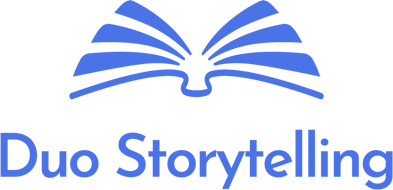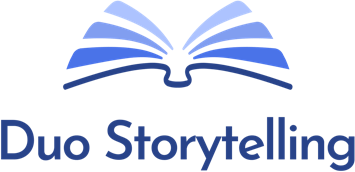Is there anything more frustrating than knowing you have a story to tell but not knowing how to tell it? You sit down to write, but you can’t seem to hit the right beats at the right time or strike the perfect balance between rising and falling action. If any of that sounds like you, falling back on a dependable story structure may be your answer. Even if you aren’t struggling, story structures can be your roadmap on your journey to “The End.”
What Is Story Structure?
Sometimes called narrative structure, story structure helps organize the beginning, middle, and end for the reader. When you follow an established structure, it’s easier to balance plot points and characterization while staying true to your genre. But just because a structure is established doesn’t mean it will produce a generic result. Structures exist as guidelines—ways to keep writers on track toward satisfying conclusions. They don’t control how the plot turns out. That’s up to you and the characters!
You can also think of story structure as the framework of your book. It’s there to help you see the possible next steps, not limit your options.
But why does any of this matter? Can’t a story simply be a story, told however the author wants?
Why Is Story Structure Important?
While you can technically call any series of events on a page a story, structure keeps a narrative tight, engaging, and virtually plot hole proof. In other words: structure helps you tell your story, but better.
The right narrative structure can
- Keep you organized and moving in the right direction. Sometimes we linger in exposition for too long or forget to include a clear climax for a quality payoff. With a solid structure as guidance, these issues become easier to spot!
- Help cut out elements that aren’t adding to the story. If you know you need to move on to a new crisis or piece of information, you’re less likely to have a page of filler. Sure, we all love a good montage, but do you really need a fifteen-page chapter about trying on outfits at the mall?
- Draw out themes, or what the story is “really” about. Sometimes we’re so focused on getting the story out that we lose sight of the bigger message being sent. Story structure helps you draw connections between what’s happening on the page and what’s really at the heart of it all.
- Help you make sure you’re telling a complete story, period. We’ve all read a book or watched a movie and found ourselves wondering, Was that it? Or worse, ending with more questions than you have answers—and not in a fun way.
The (Almost) Universal Basics
For the most part, all narratives follow the same basic beats:
- The exposition. The protagonist and the current “status quo” are introduced to the reader, along with the protagonist’s desire for something they don’t currently have, be it material, mental, experiential, or something else.
- The catalyst. Sometimes called an inciting incident, this sets everything in motion and forces the protagonist into action and out of their comfort zone.
- Rising action. Continued events increase the tension or stakes as the protagonist pursues their goals. They usually face struggles or setbacks that change them.
- The climax. The big moment that everyone’s been waiting for, what the story has been building toward the entire time. The protagonist either succeeds or fails at their goal, and the big questions are answered. It’s the payoff for everything you’ve built.
- Falling action. The big exhale after all that excitement. Side plots and unanswered questions get resolved as the protagonist grapples with the fallout of the climax.
- The resolution. Where the story ends (or doesn’t, if it’s a series). Here there’s no more major plot but an understanding of where the protagonist is now (materially, mentally, experientially, etc.) versus when they started. The resolution is there to tie it all together with a tidy—or not-so-tidy—little bow.
Different Story Structures
While most stories have the common elements listed above, individual story structures help you put them all together. For example, the three-act structure popularized by ancient Greeks organizes a narrative into nine points, including multiple beats between rising action and a pre-climax with a shortened resolution. Freytag’s pyramid is a structure commonly used in drafting tragedies, where the climax comes at the midpoint of the story and a catastrophe replaces the resolution. Similar to Freytag’s pyramid in its high rise and sudden fall, the Fichtean curve is a fiction method that does away with a lot of the initial worldbuilding and introduction. Instead, it starts at the inciting incident and builds tension through a series of minicrises until the climax, finishing with a rapid resolution.
Each of these structures offers a unique twist on the same basic elements, just tweaked to perfect the way they capture a certain story or genre.
Now, let’s take a closer look at one of the most commonly used structures in fiction, which has many subtypes of its own.
Structure in Action: The Hero’s Journey
1: The Beginning
- The ordinary world. This is the established norm of the protagonist, their reality.
- The call of adventure. The hero is called to action, given a reason to embark on an adventure.
- Refusing the call. The hero is initially reluctant to respond to the call to action.
- Meeting the mentor. The hero meets someone who offers something they need, be it guidance, knowledge, skill, or items. This help gives the hero the strength or courage to face their obstacles.
- Crossing the threshold. The hero is finally ready to start their quest in earnest. They step outside their comfort zone and into uncharted waters.
2: The Middle
- Tests, allies, enemies. The hero is subjected to increasingly difficult challenges where new and old alliances are tested, forged, or broken.
- Approach to the inmost cave. The hero grows closer to their goal, but there’s still uncertainty. They may experience some of the initial doubts they had before meeting their mentor.
- The supreme ordeal. The hero overcomes a great challenge, whether internal or external. Drawing strength from everything they’ve experienced, they persevere to claim the…
- Reward (or, seizing the sword). As a result of the supreme ordeal, the hero emerges changed or with some type of reward. It may be an object, knowledge, power, a literal prize, or any number of “winnings.”
3. The End
- The road back. The hero has changed, but there’s still more challenge. The “reward” wasn’t the end of their journey.
- Resurrection. This is the real climax. The hero faces their greatest challenge yet as everything they’ve learned so far comes together. The hero is made or broken by the outcome of the challenge—everything hinges on success or failure.
- Return with the elixir. The final stage of the hero’s journey is when the hero returns to the ordinary world as a changed person. Loose ends are tied up, side plots are resolved, and the hero’s journey can come to a close.
Looking for More?
Whether you’re trying to find the perfect narrative POV for your book or trying to build your best main character, we’ve got you covered. And stay tuned for more on story structure. Over the next few months, we’ll examine some other popular story structures so you can pick the one that’s right for your book!
Find us on Instagram and Facebook for more.
Sign up for our newsletter to receive TWO FREE toolkits: Demystifying Query Letters and The Roadmap to Successful Self-Publishing.


